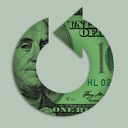The great subscription news reversal

News companies are reversing course on hard subscriptions — once seen as a safer alternative to the volatile ad market — in favor of flexible paywalls, membership programs and more ads.
The big picture: A strategy focused mainly on subscriptions requires upfront spending on premium content. That takes time to pay off — and many publishers don't have the cushion for that in the current ad slowdown.
- At the same time, many outlets have learned that simply throwing a paywall up over your previously free content doesn't work either. It throttles ad revenue without capturing enough new subscribers.
Driving the news: Substack, the platform built on the promise of letting creators directly charge their audiences, is experimenting with a new pilot program that helps creators find advertisers and coordinate ad buys, Axios has learned.
- TechCrunch is shuttering its subscription service TC+, as it pushes to reorient its coverage around investors and amid layoffs.
- The Washington Post, which has lost roughly 500,000 subscribers since its Trump-era peak, is considering more dynamically priced subscriptions, its new CEO Will Lewis told Semafor.
- Time fully removed its digital paywall last year in favor of reaching a broader audience with more ad-supported content.
- Quartz dropped its paywall last year in favor of a membership model.
- The Atlantic shifted from a blanket paywall to a more dynamic approach early last year.
- Gannett, the U.S.' largest local newspaper company, began reducing the number of articles behind its paywall in late 2022 to boost the company's ad revenue.
- The Chicago Sun-Times dropped its paywall in favor of a membership program after being acquired by the Chicago Public Media Board of Directors in 2022.
Between the lines: While a few major national news outlets, such as the New York Times, Bloomberg and Dow Jones, have had success scaling their subscriber bases, most other news companies have struggled to sustain momentum following the Trump-era subscription news boom.
- "My hunch is that the existing model is creaking," the Post's Lewis told Semafor. "We went from an advertising model to a subscription-based model, and that subscription-based model is now waning and then will enter a more significant period of decline."
Zoom out: Trade outlets have had greater success in subscriptions catered to niche audiences that are primarily professionals.
- But those businesses aren't dependent on general news consumers, who are experiencing a broader level of subscription fatigue in the wake of the pandemic.
Be smart: Even bigger entertainment companies are now hedging against their subscription models to increase profitability.
- Netflix, Disney+ and other streamers have debuted cheaper, ad-supported subscription plans to prevent cancellations.
- Spotify began dropping paywalls on some of its podcasts last year and is signing fewer exclusive podcast deals, opting to make more money from distributing them and selling ads on them instead.
What to watch: The subscription slowdown over the past few years has prompted a slew of new models to take shape that still seek direct revenue from readers, but don't prevent news outlets from reaching wide audiences.
- The Guardian, for example, saw record reader revenue from donations in the U.S. last year.